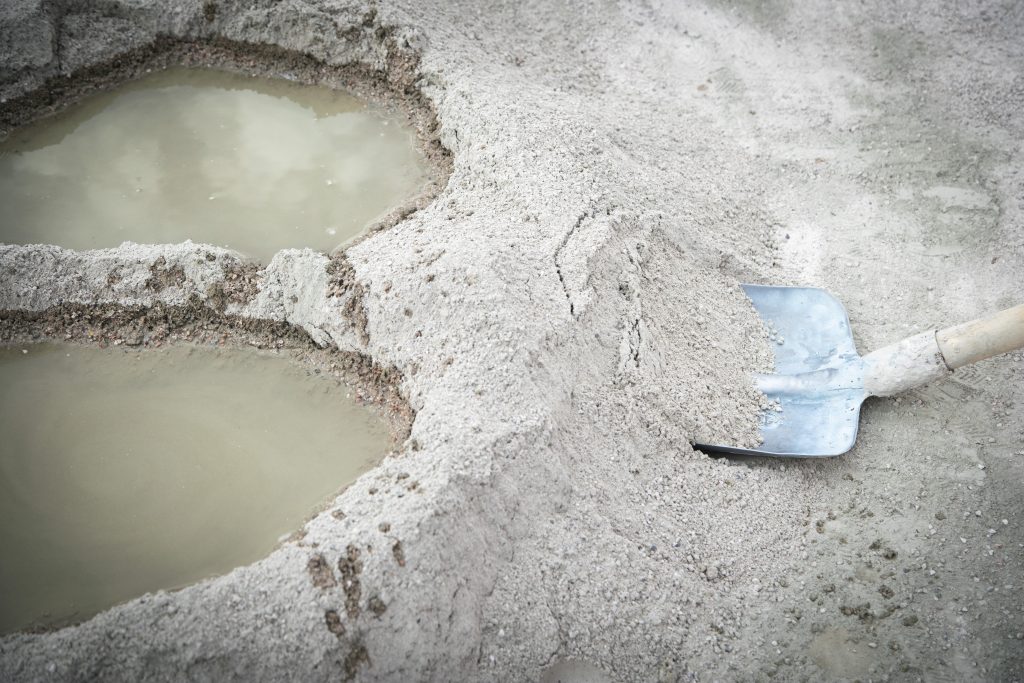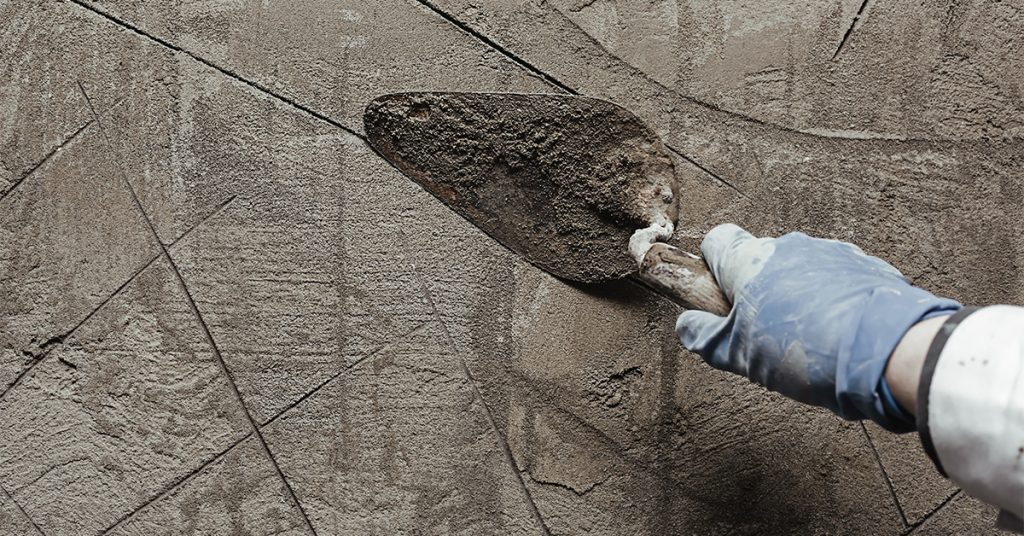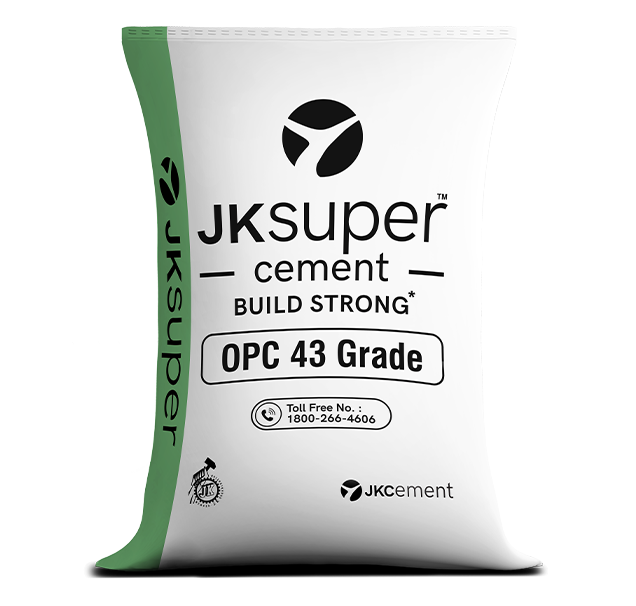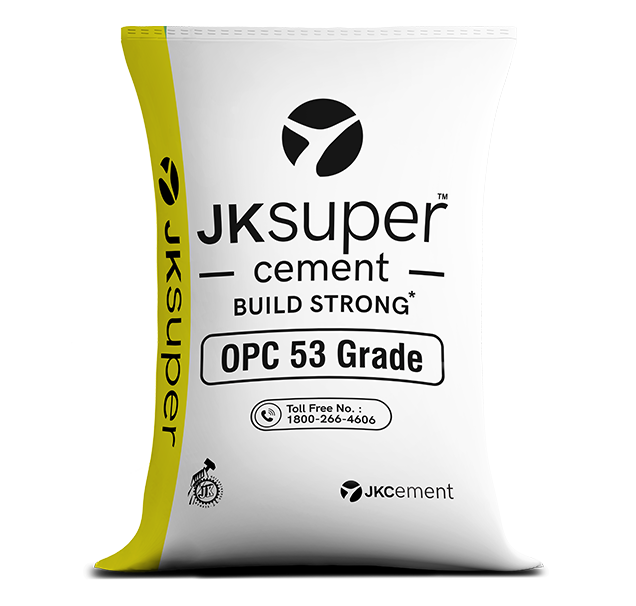Cement acts as a binding agent when used in concrete or mortar mix. Being anhydrous in nature, cement requires to be hydrated to let it gain its binding strength. This is when the cement hydration process begins. When cement and water are mixed, they trigger a series of exothermic chemical reactions leading to the formation of crystalline structures and binding agents. Cement hydration happens in several phases and forms different products. If you want to learn more about the cement hydration process, read on.
What Is Cement Hydration?
Cement hydration is a series of chemical reactions that occur when water combines with cement particles. The major component in cement, particularly Portland cement, reacts with water to form various hydration products. The primary products formed during this reaction are calcium silicate hydrate (C-S-H) gel, calcium hydroxide (CH), and ettringite. These compounds contribute significantly to the strength and durability of the concrete. The hydration process is time-sensitive, and its progression is influenced by factors such as temperature, water-to-cement ratio, and the presence of supplementary cementitious materials.
Products Formed During the Cement Hydration Process
The products of cement hydration are crucial components that contribute to the strength and durability of concrete. The primary products include:
Calcium Silicate Hydrate (C-S-H) Gel:
This gel is the primary product of cement hydration and is responsible for the binding properties of concrete. C-S-H gel fills the gaps between cement particles and aggregates, forming a dense matrix that provides strength and durability to the concrete.
Calcium Hydroxide (CH):
Another significant product, CH, also known as portlandite, forms during cement hydration. While it contributes to early strength development, its long-term contribution to concrete strength is limited compared to C-S-H gel.
Ettringite:
It is formed particularly in cement mixes containing supplementary cementitious materials like slag or fly ash. It helps in delaying the stiffening of the cement or concrete in the plastic stage.
Various Phases of the Cement Hydration Process
The hydration process occurs in different phases to attain the final strength. Here is a closer look at the phases of cement hydration:
Initial mixing reaction:
Upon adding water to cement, an immediate reaction occurs where the cement particles dissolve. Here, the dissolved particles release ions and initiate the formation of hydration products. This phase starts the chemical process for subsequent reactions to occur.
Dormancy:
Following the initial reaction, there is a period termed ‘dormancy’ where the hydration process appears to stall. Despite no visible changes, essential chemical reactions continue at a slower pace. In this phase, it might seem like no there is progress, but it is a critical stage for the development of long-term strength.
Strength acceleration:
As the hydration process gains momentum, there is a noticeable increase in strength development. Hydration products like the calcium silicate hydrate (C-S-H) gel and calcium hydroxide (CH) begin to form more extensively, enhancing the material’s strength.
Speed reduction:
Once the initial acceleration in strength development occurs, the rate of reaction gradually decreases. This reduction in speed does not imply a halt in the hydration process. It only signifies slowing down of the chemical reactions.
Steady development:
Finally, the process reaches a phase of steady and continuous development. Although the rate of reaction slows down considerably, hydration continues over an extended period. The continuation of the process contributes to the ongoing enhancement of the concrete’s properties, including its strength and durability.
Importance of Hydration of Cement
The hydration of cement holds paramount importance in the realm of construction and infrastructure for several reasons:
Strength development:
Cement hydration is the bedrock for the strength and durability of concrete. The chemical reactions that occur during hydration lead to the formation of robust compounds like calcium silicate hydrate (C-S-H) gel, enhancing the material’s strength over time.
Binding agent:
Hydration transforms loose cement particles into a solid matrix. It acts as the binding agent that holds the aggregate together to form a cohesive structure.
Durability and resistance:
Proper hydration enhances the concrete’s resistance to environmental factors like freeze-thaw cycles, chemical attacks, and abrasion. The hydrated cement paste forms a protective layer, bolstering the material’s durability against wear and tear.
Workability and construction efficiency:
Understanding hydration aids in managing the concrete’s workability and setting time, facilitating smoother construction processes. Controlling these aspects enables precise moulding, placement, and finishing of the concrete.
Choose JK Super Cement to build stronger and resilient infrastructures for tomorrow.
FAQs
What are the stages of cement hydration?
Cement hydration occurs through several stages. These phases mark the progression of chemical reactions between cement and water, leading to the formation of hydration products essential for concrete strength.
-
- Initial mixing reaction,
-
- Dormancy,
-
- Strength acceleration,
-
- Speed reduction, and
-
- Steady development.
What does hydration of cement mean?
Cement hydration refers to the chemical reaction that occurs when water is added to cement. This reaction initiates the formation of compounds like calcium silicate hydrate (C-S-H) gel, calcium hydroxide (CH), ettringite, and monosulphate that contribute to the binding properties and strength of concrete.
What affects cement hydration?
Several factors influence cement hydration, including the water-to-cement ratio, temperature, presence of supplementary cementitious materials, curing conditions, and the chemical composition of the cement itself. Adjusting these factors can impact the rate, duration, and quality of the hydration process.
How long does the hydration of cement continue?
Cement hydration peaks around 10 to 20 hours after mixing, with most strength gain occurring within 28 days. However, complete curing and the attainment of ultimate strength continue over weeks or months. It also depends on factors like environmental conditions and specific mixtures used in construction.
What is the final product of hydration of cement?
The final products of cement hydration include crucial compounds like calcium silicate hydrate (C-S-H) gel, calcium hydroxide (CH), ettringite, and monosulphate. These compounds form a robust matrix within the concrete, providing strength, durability, and stability to the structure. The specific products depend on the composition of the cement and the environmental conditions during hydration.













